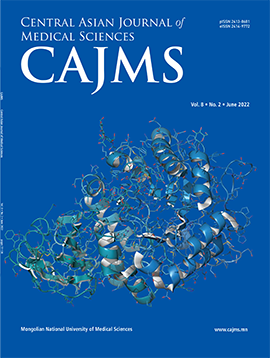Isolation of Heavy Chain Antibodies from Camelus Bactrianus Serum
DOI:
https://doi.org/10.24079/cajms.2020.09.007Keywords:
Serum, Affinity Chromatography, Camelus Bactrianus, Immunoglobulin G, AntibodiesAbstract
Objectives: The IgG antibodies from species of Camelidae are named heavy-chain antibodies that lack L-chains of typical antibodies. The antigen-binding site of the dromedary HCAb is located in the single-chain domain referred to as the nanobody. Nanobodies are distinguished from other conventional antibodies by their unique properties, which lead to numerous biopharmaceutical and medicinal applications. Therefore, this study aimed to isolate IgG protein by isoforms from the blood serum of Mongolia’s two-humped camels and determine the contents of isomers of the antibody to enable further C. bactrianus nanobody research. Methods: IgG subclasses were separated by two different affinity chromatography steps using the ÄKTA Prime fast protein liquid chromatography method. The immunoglobulin fractions were determined using assays by the Bradford method and absorbance at 280 nm. The purity of IgG fractions was verified by the SDS-PAGE electrophoresis method. Results: Camel blood serum IgG subclasses were isolated by Protein A and G affinity chromatography columns, and the ratios of IgG1, IgG2, and IgG3 isotypes were 40.5 ± 4.5 kDa, 24.0 ± 8.0 kDa, and 35.5 ± 5.1 kDa, respectively. IgG2 and IgG3 subclass heavy chain bands on SDS-PAGE showed different molecular weights: 45 kDa and 43 kDa. Conclusions: Our findings suggest that IgG protein isotypes in the domestic Camelus Bactrianus serum that we identified were statistically different from C.Dromedarius serum.
Downloads
253
Downloads
Published
How to Cite
Issue
Section
License
Copyright (c) 2020 Mongolian National University of Medical Sciences

This work is licensed under a Creative Commons Attribution-NonCommercial 4.0 International License.




